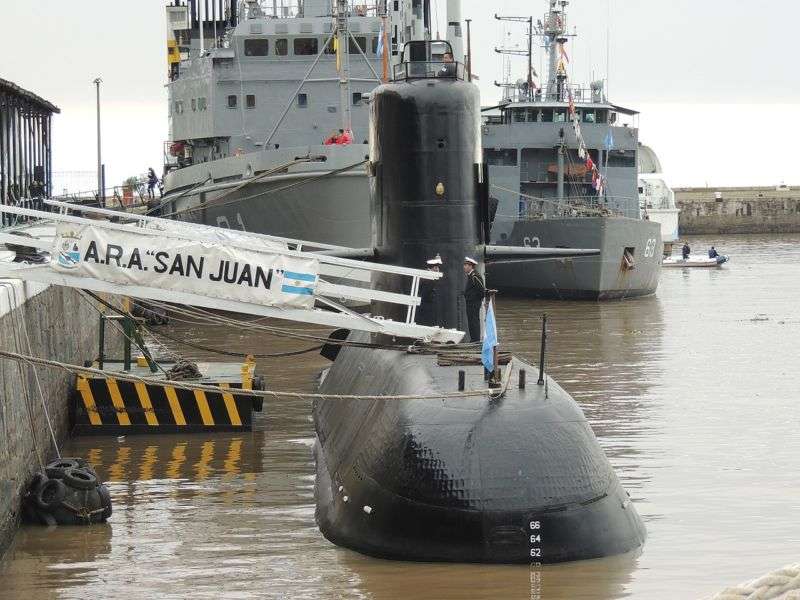
Doomed Argentine sub found a year after its disappearance

Almost a year to the day after its tragic loss at sea, the Argentine Navy submarine ARA San Juan has been located. Using side-scan sonar and autonomous underwater vehicles (AUVs), the crew of the oceanographic survey vessel Seabed Constructor found the lost sub in the bottom of an undersea ravine about 600 kilometers (approximately 375 miles) east of Comodoro Rivadavia in Argentina’s Patagonia region. The submarine rests at a depth of 920 meters (more than 3,000 feet) below the surface of the South Atlantic—over three times its safe operating depth and well below the crush depth of the sub.
The San Juan was one of only two TR-1700 (or Santa Cruz) class submarines completed for the Argentine Navy by Thyssen Nordseewerke. Built in Germany, the San Juan was delivered in 1984 and underwent a major refit in 2014; other subs intended to be built for the class were put on hold or cancelled, with two unfinished subs cannibalized for parts. Much of the sub’s mission in recent years was focused on surveillance operations in Argentina’s exclusive economic zone in the South Atlantic, primarily to combat illegal fishing.
The announcement of the discovery came only two days after a memorial service held by family members of the crew and a day after the anniversary of the ship’s loss. Recovery operations are pending, awaiting a decision by the Argentine government.
The Seabed Constructor, which found the San Juan, is contracted to hydrographic survey company Ocean Infinity. Upon the discovery of the submarine, the company’s CEO, Oliver Plunkett, made the following statement:
We sincerely hope that locating the resting place of the ARA San Juan will be of some comfort to [the crew’s families] at what must be a profoundly difficult time. Furthermore, we hope our work will lead to their questions being answered and lessons learned which help to prevent anything similar from happening again.
The five AUVs used in the search are equipped with side-scan sonar, multi-beam echo-sounder for seabed mapping, an HD camera, and synthetic aperture sonar. In addition, from the host vessel, Ocean Infinity is able to deploy two work-class ROVs and heavy-lifting equipment capable of retrieving objects weighing up to 45 metric tons (approximately 50 US tons) from depths of up to 6,000 meters.
In addition to the Seabed Constructor‘s crew of about 60 people, the crew was joined during the two-month search for the San Juan by three officers of the Argentine Navy and four family members of the sub’s crew, who were aboard to observe.
Recovering the San Juan‘s hull may be the only way to determine exactly what caused the sub’s loss. But shortly after the sub’s disappearance, an Argentine Navy spokesperson said that the captain of the sub had reported on November 15, 2017, that water had been taken on by the submarine through the sub’s snorkel, used to bring air to the ship’s crew and to the diesel engines during submerged operations. The seas were particularly rough at the time. Water apparently caused a short in one of the submarine’s eight 120-cell batteries, causing a fire. While the captain later reported that the fire was contained, an explosion was detected a short time later. The explosion was possibly the result of a build-up of hydrogen gas caused by the battery damage.




